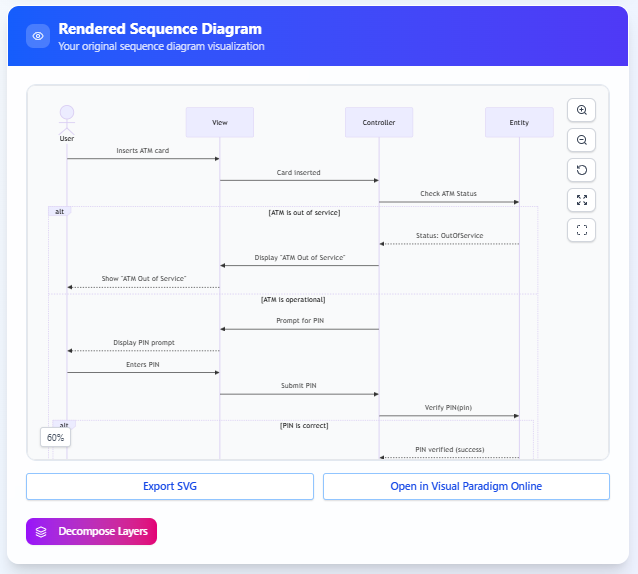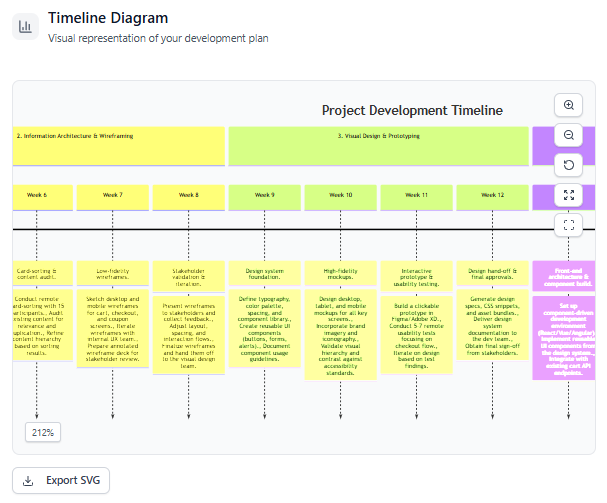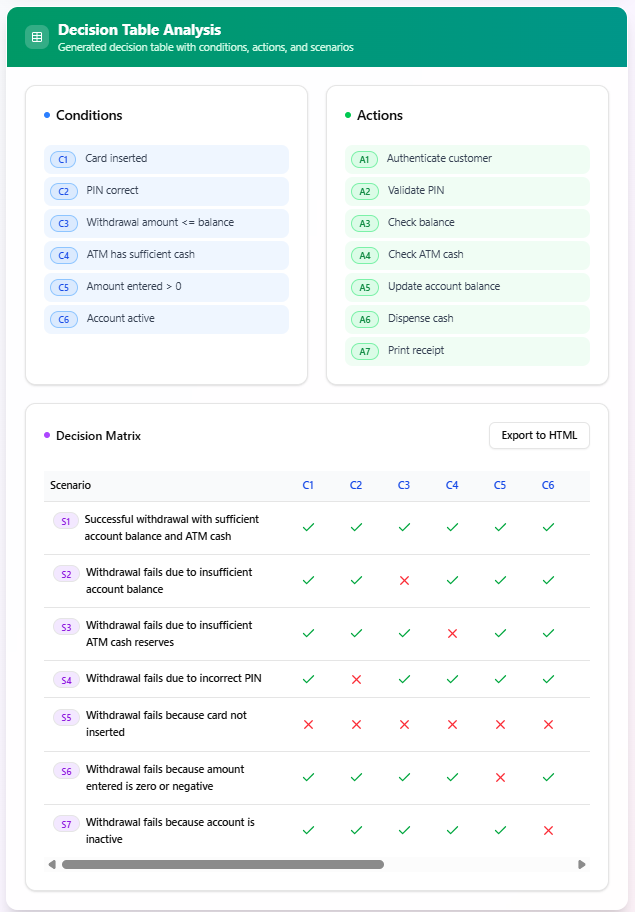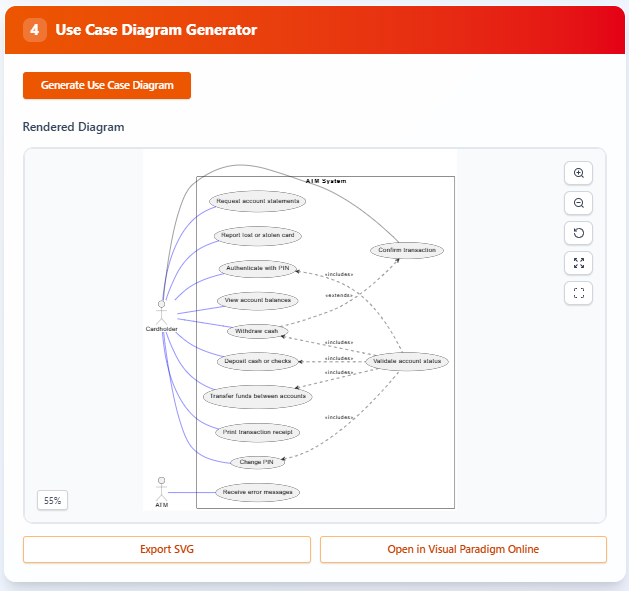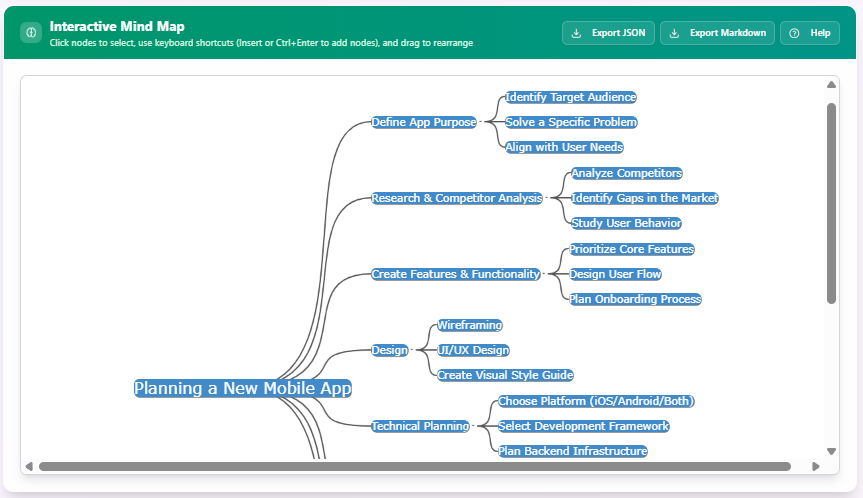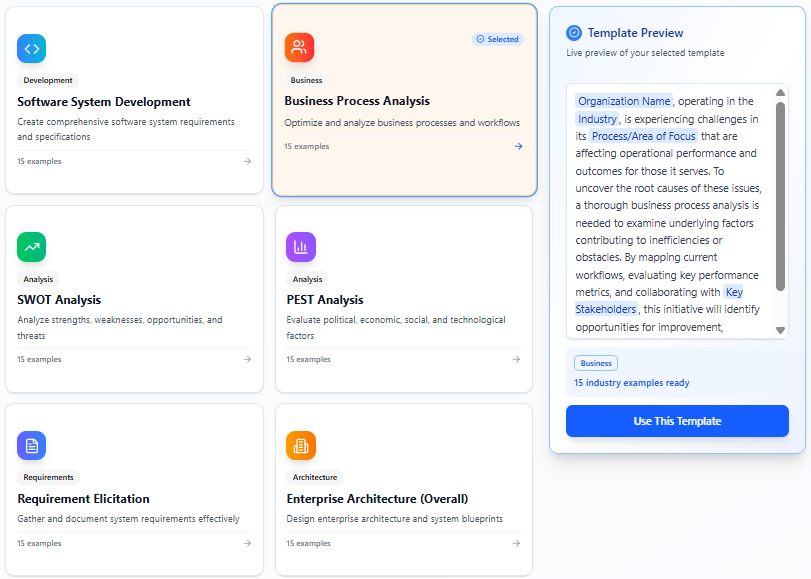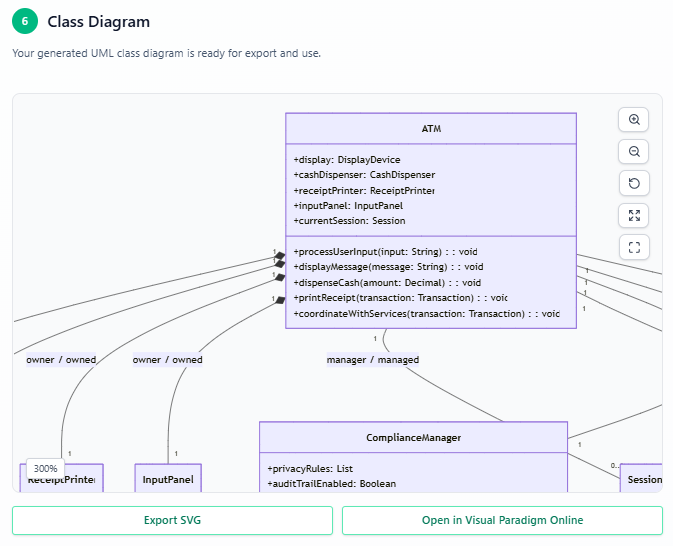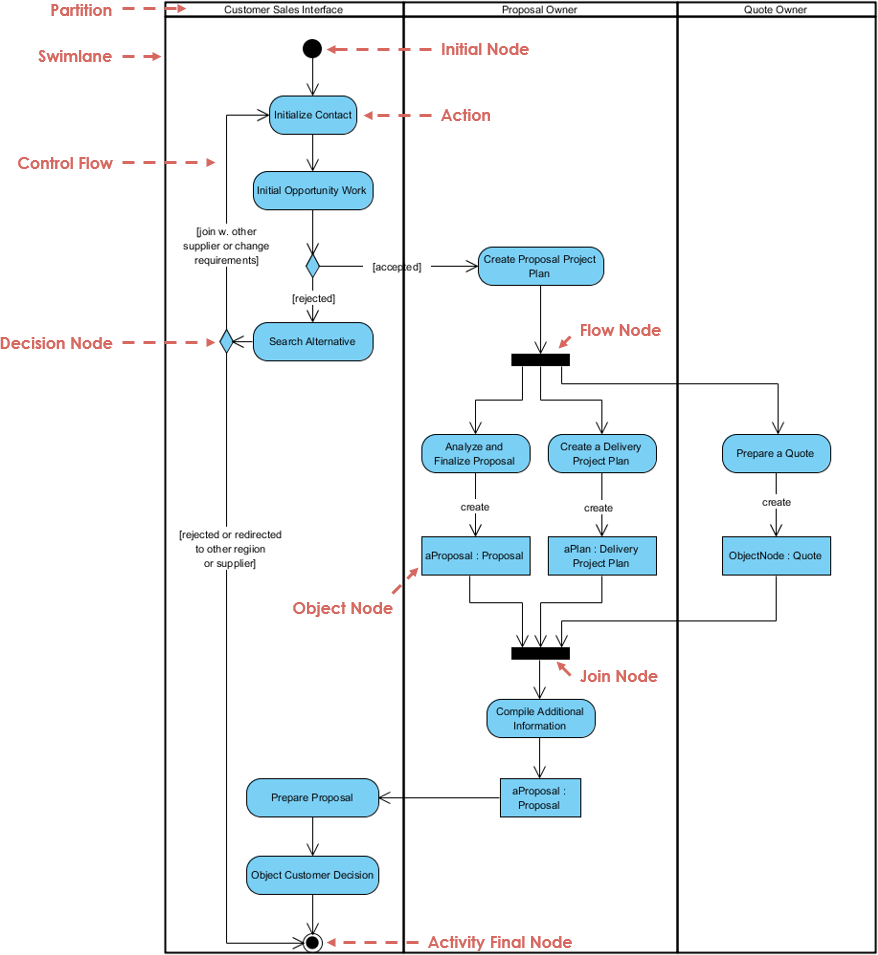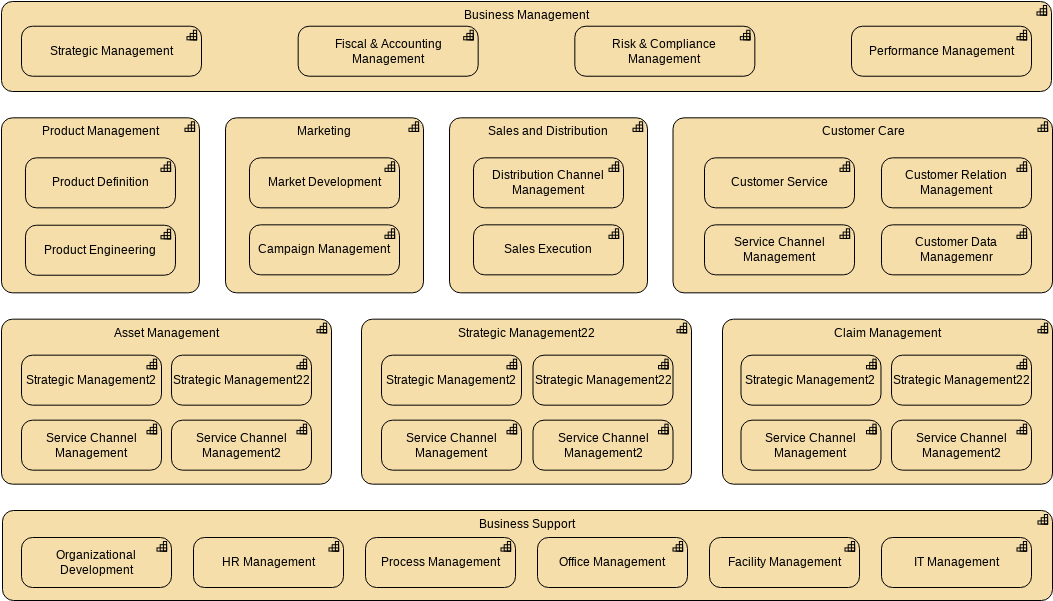A Comprehensive Guide to Using the MVC System Architecture Generator
This tutorial provides a step-by-step guide to using the MVC System Architecture Generator, a powerful tool designed to transform a use case description into a UML controller class diagram and an MVC sequence diagram. By leveraging AI, this tool bridges the gap between high-level requirements and implementation-level design, enabling developers to create precise, actionable blueprints for system development. Follow the steps below to navigate the tool and generate detailed UML artifacts for your use case. Step-by-Step Guide Step 1: Access the MVC System Architecture Generator Navigate to Tools in the main menu. Select…continue reading →


